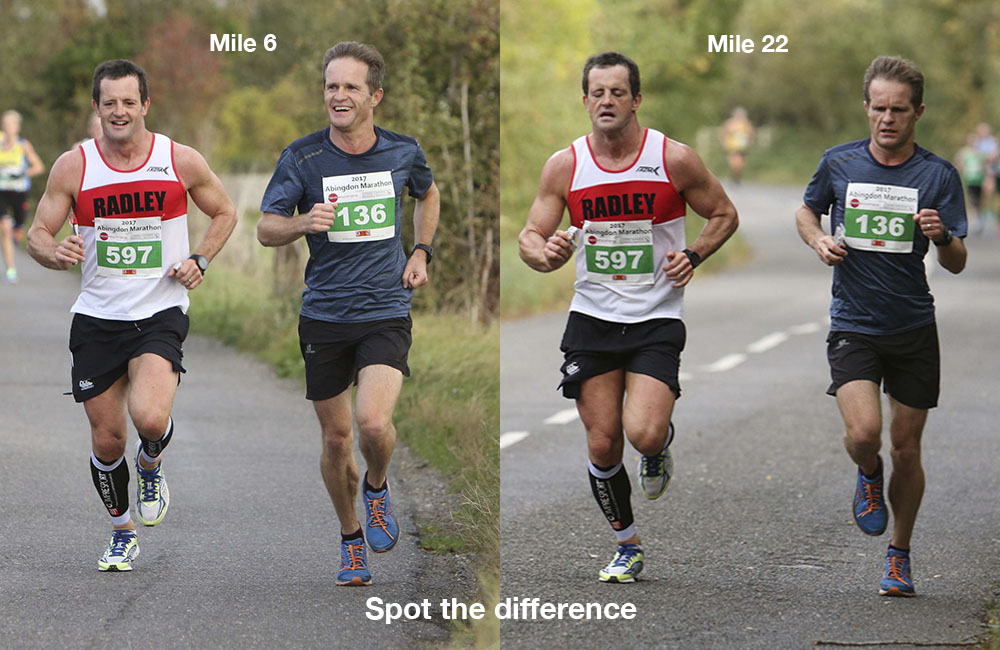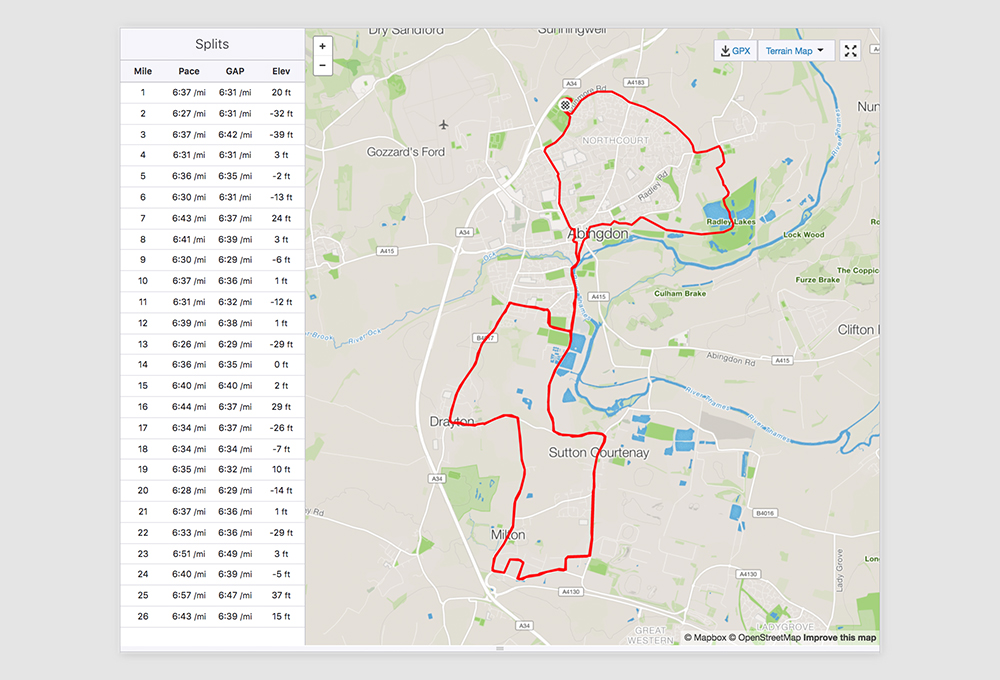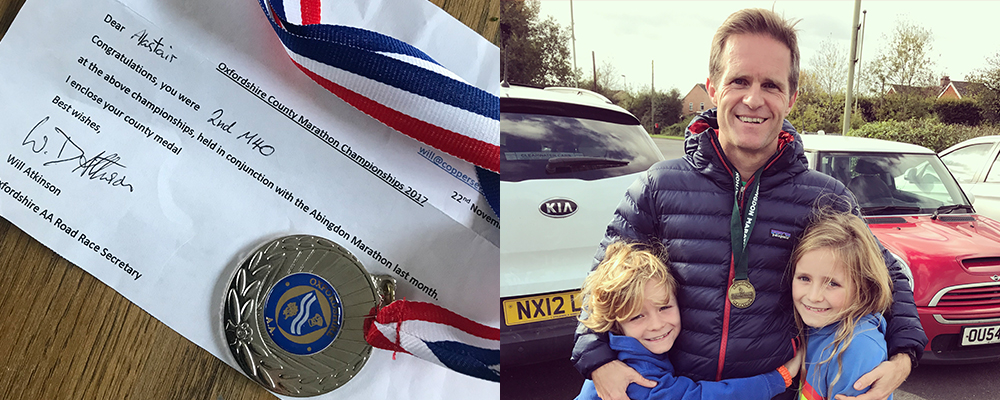One AC joint separation, six unexpected business lessons

Parallels between sport and business are not a new thing. What’s nice is when you see them clearly for yourself based on your own unique experiences.
Last month I ticked a personal box, by running a marathon in under three hours. Having tried without success a handful of times over the past 15 or so years, I managed 2 hours 52 minutes at the Abingdon Marathon. I was delighted. And reflecting on a somewhat unusual 12-week journey to that point, I realised just how much of the experience could be related to success in business. Here’s just some of the practical stuff I was reminded of, which I hope you’ll find of value too.
Lesson one: have multiple objectives
Abingdon Marathon wasn’t actually my primary goal for the year. Since February I’d been training in earnest for Ironman Wales, a triathlon I’d raced the year before. I had my sights set on doing faster – with the ultimate objective (admittedly a longshot) of bagging a qualification slot for the Ironman World Championships in Hawaii.
With six weeks to go and with a growing belief that my goal might just be achievable, I went over the bars of my bike, after being forced to break hard to avoid a speeding car. The result: an acromioclavicular (AC) joint separation, otherwise known as a knackered shoulder. A month in a sling and three months strictly no swimming, meant the Ironman was out of the picture. Conscious of keeping it in perspective (I know it could have been much worse), I was still gutted.
As it happened, I had another event in the diary: the Abingdon Marathon, six weeks after the Ironman. I’d signed up at the beginning of the year in a fairly non-committal way. The bike accident changed that. It was now the main event. I could see an opportunity and immediately started to feel more positive.
The business lesson? Having more than one objective is so important, not just for general productivity, but because should you fall short of one, there’s still potential to make fulfilling progress elsewhere. Not meeting a particular financial objective, for example, needn’t be the end of the world, if success in other areas keeps you moving forward.
Lesson two: be prepared to change tack
As rapidly as one door closes (or a car comes belting out of country lane), another inevitably opens. The trick is to see it and be ready to adapt quickly. For me it was about recognising that achieving a long-held marathon ambition might just be as rewarding as realising my Ironman aspirations. All I had to do was accept the situation as it was and consider what changes I’d need to make, and what approach to take, to give me the best chances of a result with my new goal.
It’s exactly the same in business. Don’t ever lose heart, the opportunities are always there. Just keep your eyes open and be prepared to alter course, because you’ll inevitably have to at some point.

Lesson three: vary your pace
Rest is an essential part of the equation in athletic endeavour. Recovery after intense physical effort is what permits the improvements in strength and endurance. Otherwise, you’re just building fatigue. The same applies to work. Going all out, all the time, is not only unproductive, it’s damaging and will ultimately lead to burnout.
Coming off a bike is not a way I’d recommend to see the light. So take it from me that rest works. With my arm in a sling for a month, exercise was limited to the indoor bike and running (after a week or so) one-armed. By the time the sling was off, I was properly itching to go – mentally and physically refreshed.
Effective running training also involves varying pace on a session-by-session basis and often within a session. ‘Interval training’ mixes rest with high intensity activity. And it works for the mind as well as the body. The principles are exactly same for work. If you work hard, be sure to rest hard too.
Lesson four: make every effort count
‘Junk miles’. That’s the term given to runs without a clear objective. The idea being that all training sessions towards a particular end goal, should have a specific focus – to improve speed or build endurance for example.
In preparing for Abingdon, I worked at this more than I had on previous occasions. My focus was on quality. I still needed the volume, but the aim was to make every run count. It took more discipline, but mixed with more rest than usual, I was mentally and physically better able to cope with the demands of tougher sessions. It was a sustainable approach that did the job.
The business parallel is pretty clear. Identify the actions that are really going to make the difference to your goals and then commit to them 100%. And part of that means saying “no” to anything that represents a distraction. Easier said than done I know, but it’s key to making progress.
Lesson five: race your own race
It may be an expression you’ve heard before? And how true it is. I had my own goal for the marathon and a plan to achieve it. A plan I stuck to before and during the race. I knew exactly what I need to do for the best chance of success.
In business, keeping an eye on the competition is important, but be wary of it becoming all-consuming. Remember their goals aren’t the same as yours. Worry less about what others are up to and you’ll have more energy to focus on realising your own aspirations. It’s a life lesson as much as anything else.

Lesson six: seek to share the load
About half an hour into the race itself, I found myself alongside another runner called James. We got chatting (not as difficult as you might think at that point) and discovered we shared the goal of breaking three hours. At the halfway point we were still together, still encouraging each other. The miles ticked down from there as we held a steady pace. We ultimately finished within a few seconds of each other, both well under our target times.
Would I have run it as quickly without James? I’m not convinced I would. One thing’s for sure, it would have been much harder work. Here was a lesson I’d never expected to find in what’s essentially a solo event. A fantastic reminder of the power of working together, and how much it can add to the enjoyment of the experience.
The finish line
What struck me about this marathon was how much more I enjoyed the whole journey (the build-up and the race itself) than I have on previous occasions. No doubt achieving my goal was a major part of that. Even so, I’m convinced the greater fulfilment was down to much of what I’ve outlined here, which I’m now looking to translate more readily to work.
It’s been an eye-opener – just a shame it took a separated shoulder for it to happen.
About Alastair
Alastair Williams
Founder and Creative Director